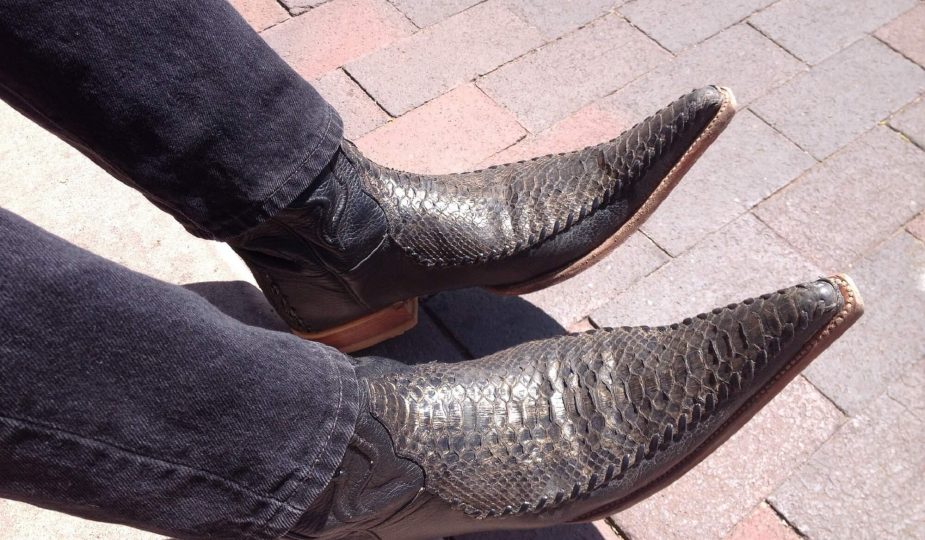Conjuring up images of cowboys, John Wayne, and the Old West, cowboy boots have been familiar footwear worn by numerous individuals throughout history. Now utilized for their distinct look, cowboy boots have become a popular fashion trend among many in today’s society.
Like other shoes, cowboy boots come in many different shapes and sizes and from various materials. The most commonly used to construct these boots is cowhide leather, but often, bootmakers may opt to use a more rare, exotic type of leather to craft this iconic footwear. Some of the more common exotic leathers include snakeskin, reptile, sharkskin, and alligator.
With exotic leather becoming more popular, here are the things that you should know about owning exotic-leather cowboy boots.
Different Features of Various Exotic Leathers
There are a variety of types of exotic leathers used to make men’s cowboy boots, and all exhibit different looks and characteristics. Colors, pattern designs, texture, and durability are all just some of the ways different exotic leathers can vary.
- Snakeskin leather is a durable leather that presents a one-of-a-kind, intricate designs and often crafted from rattlesnakes, pythons, and anacondas. Snakeskin leather will yellow as time goes by, but regular maintenance can slow it down.
- Alligator leather looks scaly with checkboard patterns and mainly complements with a dress boot leather in the Southern Part of the US. Because of their durable nature, boots made from alligator leather last for a long time.
- Reptile or lizard leather also shows a tile-like pattern but often with a shiny finish. This leather is usually made from ringtail lizards or iguanas and is similar to alligator leather but lasts even longer.
- Sharkskin leather is extraordinarily coarse and tight and often displays crease-like patterns and a unique grain. This leather is more waterproof but less breathable than other exotic leathers and is relatively resistant to abrasions.
These are just a few of the many varieties of the exotic leather used in making cowboy boots today. Each exotic leather has its specific attributes and design.
Differences In Maintenance of Exotic-Leather Cowboy Boots
Whether its a natural cowhide leather or more exotic leather, cleaning and conditioning play an essential part in the preservation of cowboy boots. However, different types of exotic leather present small differences in care and maintenance requirements.
- Snakeskin leather: Snakeskin boots are more high maintenance than other types of leather. You can clean it with a soft brush or a dry, soft cotton cloth. A damp cloth can also work. Regular conditioning with exotic-leather-friendly conditioners is advisable.
- Alligator leather: With alligator leather, drying can be a big problem as well as degradation between the scales. Experts suggest that after a gentle cleaning, rubbing a thin film of conditioner with your finger into the leather and between scales will help protect the boot.
- Reptile/lizard leather: Similar to snakeskin, lizard leather requires regular care to prevent cracks from forming. After proper cleaning, gently apply a conditioner that is specific to lizard leather.
- Sharkskin leather: You should clean sharkskin leather with a soft, damp cloth. Conditioning isn’t frequently required and should take place after extensive cleanings. Just apply a thin layer to the entirety of the leather.
Generally, gentle cleaning with a soft cloth, damp or dry, is usually recommended. You can follow specific cleaning solutions, but you should make sure it’s suitable for a particular exotic leather.
Exotic leathers, diverting from the mundane and familiar, help to add uniqueness and variety to cowboy boots, and with so many different types on the market today, it’s essential to know the differences between each one. With preparation and knowledge, you may be ready to own your pair of exotic-leather cowboy boots.

